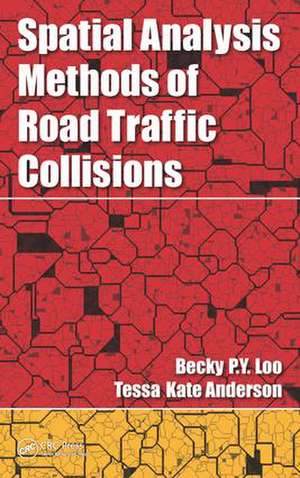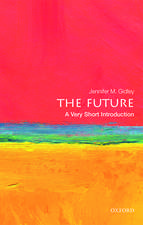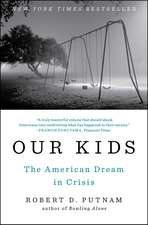Spatial Analysis Methods of Road Traffic Collisions
Autor Becky P. Y. Loo, Tessa Kate Andersonen Limba Engleză Hardback – 21 sep 2015
Spatial Analysis Methods of Road Traffic Collisions centers on the geographical nature of road crashes, and uses spatial methods to provide a greater understanding of the patterns and processes that cause them. Written by internationally known experts in the field of transport geography, the book outlines the key issues in identifying hazardous road locations (HRLs), considers current approaches used for reducing and preventing road traffic collisions, and outlines a strategy for improved road safety. The book covers spatial accuracy, validation, and other statistical issues, as well as link-attribute and event-based approaches, cluster identification, and risk exposure.
The book provides a brief summary of the evolution of road safety in the twentieth century, explores current road safety problems, and establishes road safety as a public health issue. The authors discuss risk and socioeconomic factors, lifestyle and behavior, and the impact of urban development. They consider road engineering, signage, vehicle design, the education of road users, and the enforcement of traffic safety measures. They also factor in the overall impact of road traffic collisions on transportation systems, economic systems, health systems, and society as a whole.
- Combines theoretical methodology with empirical data
- Bridges research and practice in road safety
- Includes case studies from around the world
Preț: 684.19 lei
Preț vechi: 991.79 lei
-31% Nou
Puncte Express: 1026
Preț estimativ în valută:
130.92€ • 139.100$ • 109.16£
130.92€ • 139.100$ • 109.16£
Carte tipărită la comandă
Livrare economică 18 aprilie-02 mai
Preluare comenzi: 021 569.72.76
Specificații
ISBN-13: 9781439874127
ISBN-10: 1439874123
Pagini: 348
Ilustrații: 36 black & white illustrations, 30 black & white tables
Dimensiuni: 156 x 234 x 26 mm
Greutate: 0.65 kg
Ediția:1
Editura: CRC Press
Colecția CRC Press
ISBN-10: 1439874123
Pagini: 348
Ilustrații: 36 black & white illustrations, 30 black & white tables
Dimensiuni: 156 x 234 x 26 mm
Greutate: 0.65 kg
Ediția:1
Editura: CRC Press
Colecția CRC Press
Public țintă
Academic and Professional Practice & DevelopmentCuprins
Collisions as Spatial Events. Collision Density in Two-Dimensional Space. Road Safety as a Public Health Issue. Risk and Socioeconomic Factors. Road Collisions and Risk-Taking Behaviors. Road Collisions and Urban Development. Nature of Spatial Data, Accuracy, and Validation. Collisions in Networks. Cluster Identifications in Networks. Exposure Factor 1: Traffic Volume. Exposure Factor 2: Road Environment. Exposure Factor 3: Distance Traveled. Enforcement. Engineering. Education. Road Safety Strategy.
Recenzii
"The spatial organization of road accidents is not only an ideal topic for illustrating and understanding spatial statistics, but also for helping road safety practitioners to improve road safety. I’m looking forward to read[ing] this book written by a well recognised researcher, a book that will for sure interest a broad and diversified audience."
—Isabelle Thomas, Université catholique de Louvain, Belgium
"We have a number of books in traffic safety, but this is the first one—to the best of my knowledge—with a ‘spatial’ focus… Well-written by knowledgeable road safety experts."
—Fred Wegman, Professor of Traffic Safety, Delft University of Technology, The Netherlands
"… timely and useful and necessary … We are talking about world class researchers taking on a compelling topic that is buzzing around the research world. This book will be as seminal as the book on discrete choice model by Ben-Akiva and Lerman. … The writing is flawless and is a pleasure, not surprising when you are familiar with their previous work! I would like the book, now!"
—Carlo Giacomo Prato, DTU Transport, Denmark
"… an excellent book that is well structured and easy to read. It has a very clear focus on a very important and useful methodological approach. … The spatial analysis methods are presented clearly and simply but with sufficient details for both students and researchers to acquire the necessary knowledge to appreciate and perform similar analyses. Overall, it is an essential text for students and researchers in spatial analysis, transportation and traffic safety."
—Richard Tay, RMIT University, Australia
—Isabelle Thomas, Université catholique de Louvain, Belgium
"We have a number of books in traffic safety, but this is the first one—to the best of my knowledge—with a ‘spatial’ focus… Well-written by knowledgeable road safety experts."
—Fred Wegman, Professor of Traffic Safety, Delft University of Technology, The Netherlands
"… timely and useful and necessary … We are talking about world class researchers taking on a compelling topic that is buzzing around the research world. This book will be as seminal as the book on discrete choice model by Ben-Akiva and Lerman. … The writing is flawless and is a pleasure, not surprising when you are familiar with their previous work! I would like the book, now!"
—Carlo Giacomo Prato, DTU Transport, Denmark
"… an excellent book that is well structured and easy to read. It has a very clear focus on a very important and useful methodological approach. … The spatial analysis methods are presented clearly and simply but with sufficient details for both students and researchers to acquire the necessary knowledge to appreciate and perform similar analyses. Overall, it is an essential text for students and researchers in spatial analysis, transportation and traffic safety."
—Richard Tay, RMIT University, Australia
Notă biografică
Becky P.Y. Loo is professor of geography and director of the Institute of Transport Studies at the University of Hong Kong. Her research interests are transportation, e-technologies, and society. In particular, she is interested in applying spatial analysis, surveys, and statistical methods in analyzing pertinent issues related to sustainable transportation. She is editor-in-chief of Travel Behaviour and Society and associate editor of the Journal of Transport Geography. She is also on the editorial boards of Asian Geographer, Injury Epidemiology, International Journal of Shipping and Logistics, International Journal of Sustainable Transportation, Journal of Urban Technology, and Transportmetrica A: Transport Science.
Tessa Kate Anderson is a researcher at the Technical University of Denmark in Copenhagen. She has previously worked at the University of Hong Kong, the University of Queensland, and the University of Canterbury. She completed her Ph.D at the Centre for Advanced Spatial Analysis in London. Her research interests are transportation, road safety, and socioeconomics. In particular, she is interested in the links between socioeconomics and road safety, the effects of climate change on road safety and transport, and the application of spatial analysis. She has published research papers in Accident Analysis and Prevention, Environment and Planning B, and Cities.
Tessa Kate Anderson is a researcher at the Technical University of Denmark in Copenhagen. She has previously worked at the University of Hong Kong, the University of Queensland, and the University of Canterbury. She completed her Ph.D at the Centre for Advanced Spatial Analysis in London. Her research interests are transportation, road safety, and socioeconomics. In particular, she is interested in the links between socioeconomics and road safety, the effects of climate change on road safety and transport, and the application of spatial analysis. She has published research papers in Accident Analysis and Prevention, Environment and Planning B, and Cities.
Descriere
An interdisciplinary account of the spatial analytical approaches to road traffic crashes, this book draws on the computational advances of GIS to discuss the economic, social, and scientific importance of road safety measures and traffic management. It begins with an examination of the geographical concepts of risk, and then provides an overview of different types of analysis on road crashes. Lastly, it examines methods for road crash reduction and prevention. The book outlines current methodologies and approaches in a systematic and empirical way.












